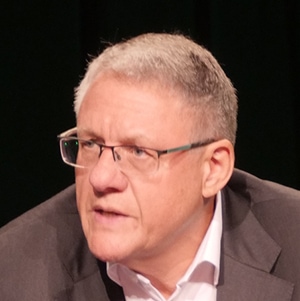Some of the world’s largest institutions are dabbling, as blockchain and DLT invade areas like trade finance, syndicated lending and cross-border payments.

Blockchain “might be a bubble, but it’s on the right track.” So said Steve Wozniak, the legendary inventor and co-founder of Apple, in Amsterdam this June at Money 20/20 Europe, which featured more than 350 influential innovators and thinkers in payments, fintech and financial services from around the globe.
Once little more than an obsession of digital-currency buffs, blockchain has quickly become a prime topic for anyone connected with payments and transactions. This year marked the first time that blockchain, or distributed-ledger technology, had its own dedicated stream at Money 20/20 Europe. The future trajectory of blockchain will also be hotly discussed at SWIFT’s annual Sibos conference in October in Sydney, Australia.
Banks are still hedging their bets. Most are experimenting with “permissioned” (closed) as opposed to “permissionless” (open) blockchains—like the one that underpins Bitcoin. Yet purists say permissioned blockchains are merely databases and lack the transparency of open systems. Permissioned blockchain “is like the intranet of the 1990s,” says Marc van der Chijs, co-founder and general partner of crypto asset manager First Block Capital.
For Swiss-based startup Smart Valor, which seeks to democratize niche alternative investments by tokenizing assets like real estate, diamonds and gold, blockchain is a “global peer-to-peer network for the distribution of value” that is faster and more efficient than traditional methods and does not even require a traditional bank. “Anyone can take advantage of this global crowdfunding,” says Olga Feldmeier, Smart Valor’s founder and CEO. “Companies can fund themselves by issuing tokenized assets that anyone can invest in, from anywhere, using their mobile phone.”

Cotti, TradeIX: Trade finance on blockchain is very real. |
Tokenized assets on the blockchain could potentially bring more discipline to how governments use monetary policy, says Feldmeier, and shift the balance of power between citizens and the state. This decentralized future is not what banks or regulators have signed up for; but Feldmeier believes it is “unstoppable.”
Heavyweights Weigh In
Banks are investing in DLT proofs of concept and pilots that still allow them to exert some influence. Money 20/20 Europe exhibited several working examples of bank-led projects, including we.trade Innovation, a joint venture of nine European banks (Deutsche Bank, HSBC, KBC, Natixis, Nordea, Rabobank, Santander, Societe Generale and UniCredit) to develop and license a DLT trade platform for commercial clients and their banks. Daniel Cotti, CFO of TradeIX, the open platform for trade finance, talked about developing the “world’s first blockchain-enabled trade finance program for DHL … with financing provided by Standard Chartered Bank and credit-risk mitigation from global insurer AIG.”
“Using the blockchain, we’re able to easily connect all of DHL’s corporate clients together with other value-added providers and banks,” Cotti told the audience. “Each of these parties is a node on DLT. They’re able to connect seamlessly, without host-to-host connections or having to send emails or PDFs. Trade finance on blockchain is very real.”
Blockchain is also real in the world of syndicated lending, with the Fusion LenderComm solution, developed by financial-software provider Finastra. “There is a lot of noise about [DLT] proofs of concept, but a real lack of delivery,” says Jacqueline Morcombe, global lending solutions lead at Finastra. “With LenderComm, we are already working with 10 banks. That represents 30% of the agency volume in the global syndicated-lending market.”
Syndicated lending still involves numerous market intermediaries communicating via fax or email, with no transparency or real-time access to information, Morcombe says. “Today, settlement of transactions in syndicated lending can take months to close,” she says. “LenderComm digitizes everything and provides real-time access to information.”
Cross-border payments and remittances also look set to be transformed by DLT. American Express has implemented blockchain-based instant cross-border payments for US corporate customers sending funds to UK-based businesses, by harnessing technology from fintech-startup Ripple.
For more than 70% of small and midsize companies, cross-border payments used to take two to three days and typically involved lots of intermediaries, Colin O’Flaherty, general manager for commercial payments, UK and Russia, at American Express, told attendees at Money 20/20 Europe. “We wanted to increase choice and transparency,” he said. “Ripple offers instantaneous, point-to-point conversations between the sender and receiver of funds.”
The current infrastructure for global payments is clunky. “Companies want to move small amounts of money at high speed with absolute confidence,” says Marcus Treacher, senior vice president of customer success at Ripple. Ripple does not settle cross-border payments on the blockchain per se, instead, it leverages concepts associated with DLT, such as the Ripple Interledger protocol, and digital assets like Ripple XRP, to speed up global funds transfers.
“Our model enables the world to adopt a method for making payments that interconnects everything,” explains Treacher, “moving value in the same way that the internet moves information around.” Ripple’s messaging service, xCurrent, allows banks to confirm payment details and delivery of funds to the recipient’s account in real time, which helps speed the process. “We’re trebling volumes every quarter,” Treacher says. “In five, 10, 20 years, the blockchain model will change how everything fits together in the commercial world.”
Even Visa, whose card network experienced an IT failure in early June that affected over five million payments in the EU, is developing a blockchain-based payments service to be launched later this year. It says the service, B2B Connect, will provide faster and more-predictable processing of corporate cross-border payments.
Getting To Maturity
Not everyone is sold on the benefits of DLT. “The problem with blockchain is that it is a solution looking for a problem,” Gregory Vincent, head of FX payment (EMEA) for INTL FCStone, a financial-services firm that transfers funds to the developing world, said at the conference.
A SWIFT white paper on DLT says that the technology has the “potential to bring new opportunities and efficiencies,” but that “existing DLTs are currently not mature enough to fulfill the requirements of the financial community.” The paper identified key criteria DLT must meet before the financial-services industry can adopt it widely. Among these are security, data controls, reliability and scalability.

Millar, ConsenSys: Most use cases can be solved today on blockchain. |
Jeremy Millar, chief of staff at ConsenSys, one of the world’s largest blockchain companies, believes DLT is already scalable for most users. “We’re well beyond 200 transactions per second,” he said at Money 20/20 Europe. “Most use cases can be solved today on blockchain. The high throughput of the Visa network will take another year or so.”
There is also the issue of standards. With so many blockchains being developed in different industries, how will they interoperate? Standards Australia, which is leading international efforts to develop DLT standards, particularly in privacy and security, has suggested leveraging criteria established by the International Standards Organization in areas such as risk management and governance.
Then there are regulators. Singapore and Switzerland have created favorable environments for DLT and digital currencies to flourish, but others are playing catch-up.
The OECD is setting up a blockchain center of excellence to avoid what it terms “regulatory arbitrage.” Meanwhile, Remington Ong, partner at the blockchain-focused venture capital firm Fenbushi Capital, speaking at Money 20/20 Europe in early June, said that the Chinese government had been actively researching blockchain and digital currencies for the past five years. The Hong Kong-based Belt and Road Blockchain Consortium wants to provide digitized trade services on the blockchain for the 65 economies participating in China’s Belt and Road Initiative.
“Blockchain is still geeky,” says Marieke Flament, managing director for Europe at Circle, a peer-to-peer-payments tech company. “The real win is when people are not talking about blockchain, but actually doing stuff on it.” Given the number of initiatives, and active interest of governments and the world’s biggest financial institutions, that may be happening soon.



